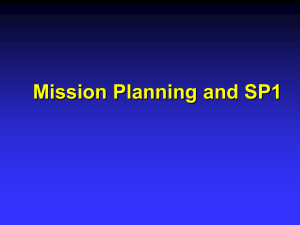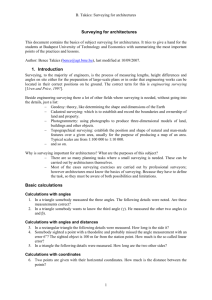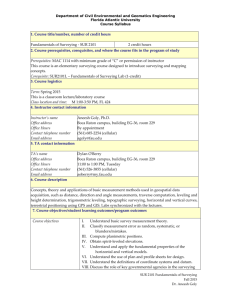TERRESTRIAL SURVEYING
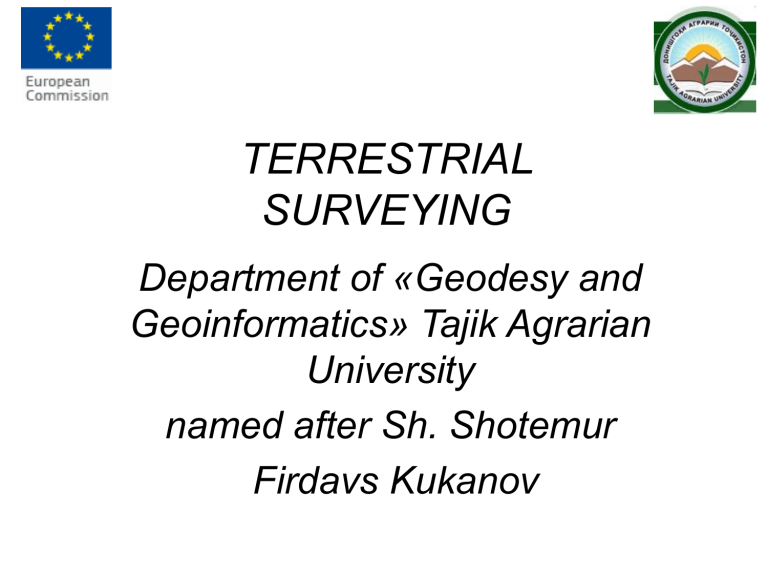
TERRESTRIAL
SURVEYING
Department of «Geodesy and
Geoinformatics » Tajik Agrarian
University named after Sh. Shotemur
Firdavs Kukanov
•
Objective
The purpose of this lesson is that such a terrestrial surveying, how and why it is held. Students need to know about the type of terrestrial surveying, terrestrial instruments used for surveying
Outline
•
Introdaction
•
Measurements
•
Equipment used
•
Student task
Introduction
• Terrestrial surveying is also referred to as field or ground-based surveying.
It can be defined as the art and science of taking measurements on or near the surface of the earth. Data acquisition is based on the collection of geospatial data.
Measurements
Measurements are collected using equipment at ground level of obtain the position an object.
Terrestrial surveying techniques involve the measurement of :
Distance
Angle
Azimuth
Height
Equipment used
Electronic Distance Meter (EDM)
Theodolite
Leveling
Total station
GPS Receiver
Electronic Distance Meter (EDM)
Theodolite
• Theodolite - measuring instrument for determining direction and measuring the horizontal and vertical angles when surveying, topographic, and geodetic surveying, construction. The main measure of labor in the theodolite are the limbs of degree and minute graduations
Theodolite
Leveling
• Level (from Fr. Niveau - level, level) - a geodetic instrument (Equipment) for the leveling, that is, determining the difference in elevation between the several points of the earth's surface relative to the conventional level ie the definition of excess.
Level
Total station
• A total station is an electronic/optical instrument used in modern surveying. The total station is an electronic theodolite (transit) integrated with an electronic distance meter (EDM) to read slope distances from the instrument to a particular point.[1]
• Robotic total stations allow the operator to control the instrument from a distance via remote control. This eliminates the need for an assistant staff member as the operator holds the reflector and controls the total station from the observed point.
• Total station
GPS
• - the Global Positioning System (GPS) is a space-based satellite navigation system that provides location and time information in all weather, anywhere on or near the Earth, where there is an unobstructed line of sight to four or more GPS satellites. It is maintained by the United States government and is freely accessible to anyone with a GPS receiver.
• The GPS program provides critical capabilities to military, civil and commercial users around the world. In addition, GPS is the backbone for modernizing the global air traffic system.
• The GPS project was developed in 1973 to overcome the limitations of previous navigation systems,[1] integrating ideas from several predecessors, including a number of classified engineering design studies from the 1960s. GPS was created and realized by the U.S. Department of Defense (DoD) and was originally run with 24 satellites. It became fully operational in 1994
GPS Receiver
•Student task
• Topic; to measure the dictance using EDM task: Define an azimuth and elevation varios
Tools: EDM, theodolite, level.
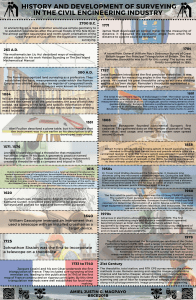

![Astronomic and Geodetic Surveying [Opens in New Window]](http://s3.studylib.net/store/data/006720332_1-995dd15e73ac73d62b2a2d2c1a39992f-300x300.png)
![Elementary Surveying [Opens in New Window]](http://s3.studylib.net/store/data/007206959_1-5874c882e65124652f9ab700273bfabf-300x300.png)

